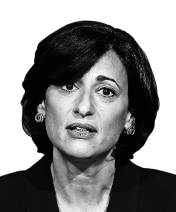- E.O. 13987: Organizing and Mobilizing the United States Government to Provide a Unified and Effective Response to Combat COVID-19 and to Provide United States Leadership on Global Health and Security
- E.O. 13991: Protecting the Federal Workforce and Requiring Mask-Wearing
- E.O. 13994 Ensuring a Data-Driven Response to COVID-19 and Future High-Consequence Public Health Threats
- E.O. 13995: Ensuring an Equitable Pandemic Response and Recovery
- E.O. 13996: Establishing the COVID-19 Pandemic Testing Board and Ensuring a Sustainable Public Health Workforce for COVID-19 and Other Biological Threats
- E.O. 13997: Improving and Expanding Access to Care and Treatments for COVID-19
- E.O. 13998: Promoting COVID-19 Safety in Domestic and International Travel
- E.O. 13999: Protecting Worker Health and Safety
- E.O. 14000: Supporting the Reopening and Continuing Operation of Schools and Early Childhood Education Providers
- E.O. 14001: A Sustainable Public Health Supply Chain
- E.O. 14002: Economic Relief Related to the COVID-19 Pandemic
- E.O. 14009: Strengthening Medicaid and the Affordable Care Act

To access the Biden Power Map, sign up for FP Insider, a data-driven subscription service from Foreign Policy that gives professionals critical insights into the global issues impacting their business.
FP Insiders get full access to this and all Power Maps and Special Reports created by FP Analytics, Foreign Policy’s research division.
We work closely with organizations from all sectors to activate FP Insider access at scale—and at maximum savings. Learn more and request an FP Insider demo.
Pandemic Response
The Biden Plan to Beat COVID-19
UPDATED August 23, 2021Since COVID-19 was declared a pandemic over a year ago by the World Health Organization (WHO), there have been over 210 million cases recorded and approximately 4.41 million deaths across the globe as of August 20, 2021. The former administration’s limited financial response and inaccurate rhetoric with respect to COVID-19, such as claiming that coronavirus outbreak was a “fake news media conspiracy,” exacerbated the outbreak domestically, resulting in the U.S. ranking as one of the lowest-scoring countries in FP Analytics’ COVID-19 Global Response Index. As of August 20, 2021, over 37 million cases have been recorded within the U.S., and over 625,000 individuals have died. To tackle the worsening health crisis, on his first day in office, President Biden signed several executive orders and directives to bolster testing, vaccinations, supplies, and treatments, and by his seventh week, he signed into law a $1.9 trillion stimulus package, known as the American Rescue Plan, to address the ongoing social and economic crisis induced by the pandemic. In April 2021, he announced plans to invest $1.7 billion from the American Rescue Plan to support the Centers for Disease Control and Prevention (CDC) to fight COVID-19 variants, and in June 2021, the administration said it would allocate $3.7 billion for the development of antiviral drugs to treat COVID-19. All told, the U.S. government has allocated approximately $13 trillion for COVID-19 relief, which some economists, such as Federal Reserve Chair Jerome Powell, warn may risk overheating the economy and fueling inflation.
Biden’s plan to beat COVID-19 promises to rely on science and to promote trust, transparency, and accountability in the federal government’s response. Through Executive Orders 13987 and 13995, he established a national COVID-19 response structure to coordinate across government agencies, focusing particularly on the effective delivery of vaccines, and created the COVID-19 Racial and Ethnic Disparities Task Force to support vaccination and response efforts across minority groups and geographically isolated communities. To measure success, the administration has outlined various key domestic benchmarks. These included 200 million vaccinations (double Biden’s initial goal) within the administration’s first 100 days, re-opening the majority of K–8 schools safely in the first 100 days, achieving an unemployment rate of 4 percent by 2022. The administration failed to meet its deadline of inoculating 70 percent of adults by July 4, 2021. As of August 23, 2021, 362 million doses have been administered, 70 percent of U.S. adults are vaccinated with at least one dose, and the unemployment rate is at 5.4 percent.
The U.S. Is Improving its Vaccine Roll-Out and Is One of A Handful of Countries Leading Vaccine Administration in the World
As of August 23, 2021, 170 million people in the U.S. (or 51.5 percent of the total U.S. population) have been fully vaccinated. However, inequities in the global vaccine rollout have disproportionately affected low- and low-middle income countries, resulting in 24.5 percent of the global population being fully vaccinated. Only 1.4 percent of people in low-income countries have received at least one dose.
COVID-19 Vaccine Doses Administered in the United States and Globally,
Per 100 People
(Dec. 2020-August 2021)
Note: The data may not equal the total number of people vaccinated, depending on the specific dose regime (e.g., some people receive multiple doses).
Source: Our World in Data
The administration is notably providing full national-level support to address the pandemic, a stark contrast to President Trump’s approach, where he characterized the federal government as a “back-up for state governments” and “a supplier of last resort.” Experts note that the CDC and the WHO require particular attention to address the COVID-19 pandemic and prepare for future health crises following the previous administration’s massive budget cuts to scientific and medical research and disease-prevention programs and Trump’s announcement to withdraw from the WHO. Despite problems the former administration faced regarding Operation Warp Speed, Trump’s flagship initiative notably set the U.S. on track to develop vaccines. However, issues with distribution hindered the effectiveness of the administration’s vaccine rollouts.
The emergence of the Delta variant around the world also is impacting the U.S.’s domestic inoculation efforts. Due to reductions in overall COVID-19 testing, mixed messaging on masking requirements, and misinformation concerning the virus’s new strains, according to the CDC, cases are rising in nearly 90 percent of jurisdictions in the U.S., with outbreaks in areas with low vaccination rates. In July 2021, due to the increasing number of cases involving the Delta variant, the CDC reversed many of its decisions lifting masking and social distancing requirements, directing fully vaccinated people in parts of the country to resume wearing masks indoors. Indeed, unvaccinated people remain the greatest concern to the administration, with President Biden calling this new wave “a pandemic of the unvaccinated” given that those who are unvaccinated are likely to become the sickest and transmit the variant to those who are already vaccinated.
In terms of foreign policy, core pillars of President Biden’s National Strategy for the COVID-19 Response are restoring U.S. leadership globally and enhancing preparedness for future threats, in particular, supporting the international public health and humanitarian response, building better bio-preparedness by reinstating the U.S. Agency for International Development’s (USAID) pathogen-tracking program known as PREDICT, and revitalizing U.S. engagement in the WHO. The strategy also includes expanding resilience initiatives against biological threats by bolstering medical and pharmaceutical supply chains and supporting industry research and development. Although the Trump administration notably ceased U.S. support for any efforts involving the WHO, in February 2020, USAID pledged $1.16 billion to Gavi, the Vaccine Alliance, from 2020 to 2023, with President Trump urging cooperation with countries to tackle the pandemic. The Biden administration, however, faces substantial challenges to achieving its COVID-19 goals, needing to balance not only domestic and global health concerns, but also the U.S. relationship with China, which the administration has identified as both a potential partner in tackling the pandemic and a competitor in the “Great Vaccine Race.” Indeed, Trump’s attacks on China and the WHO contributed to the deterioration of U.S.-China relations, with the former administration’s handling of the pandemic also negatively affecting the U.S.’s international reputation writ large, particularly among key U.S. allies. The Biden administration has similarly adopted a confrontational tone toward Beijing, denouncing China’s human rights records and rallying U.S. allies and partners to confront China’s rise in the international system, despite President Biden’s calls for U.S.-China cooperation on current and future global public health issues.
To support the COVID-19 response, Biden has created several global health-specific positions to handle the U.S. strategy, such as the White House Coordinator of COVID Response, to which he appointed former Director of the National Economic Council Jeffrey Zients. He also re-established the Obama-era National Security Council (NSC) White House Directorate on Global Health Security and Biodefense and appointed Elizabeth Cameron as senior director. In conjunction with key government leaders, including Secretary of Health and Human Services Xavier Becerra, Chief Medical Adviser Anthony Fauci, and CDC Director Rochelle Walensky, the group of medical, economic, and policy experts are tasked with increasing public trust in vaccines and ensuring the safe, timely, and equitable production and delivery of vaccines.
Biden’s COVID-19 team has shifted from prioritizing the treatment of American citizens, and in some cases restricting vaccine exports from U.S.-based pharmaceutical companies such as Pfizer and Moderna, to ramping up international COVID-19 diplomacy and global vaccination efforts. USAID Administrator Samantha Power has vaccine diplomacy as a broader opportunity to regain U.S. standing in the international arena, particularly vis-à-vis China. In contrast to the Trump administration’s limited participation in the COVID-19 Vaccines Global Access (COVAX) initiative, which supports the global distribution of vaccines and aims to provide two billion doses by the end of the year, the Biden team is working with friends, partners, and allies to enhance funding, manufacturing, and distribution capacities. In February 2021, following warnings that COVAX efforts were at high risk of failure due to lack of funds, Biden called on G7 partners to prioritize the development of a sustainable health security financing mechanism in order to mobilize countries to build the necessary capacity to end the current pandemic and prevent future ones.
As a first step, the administration pledged $4 billion to the COVAX program, providing an immediate $2 billion donation, and promising the remaining $2 billion over the next two years as other nations make and fulfill their own pledges. To further bolster COVAX’s inoculation efforts, which currently lags at 163 million doses delivered as of August 2021, the administration has committed 500 million doses to the initiative. The first 19 million doses went to countries in South and Central America, Asia, and Africa as cases rose in these continents, with Africa having the slowest vaccination rate of any continent. These efforts come following the Biden administration’s decision to distribute 25 million vaccines to sub-Saharan Africa in July 2021, which was experiencing a surge of the virus. Back in March, Australia, India, Japan, and the U.S. (united as the Quadrilateral Security Dialogue or “Quad”) also jointly committed to provide one billion doses of vaccines in Southeast Asia. U.S. Trade Representative Katherine Tai has also expressed the U.S.’s support for an intellectual property waiver over protections for the COVID-19 vaccines. Despite heavy pushback from the pharmaceutical industry, which argues that the waiver will do little to expand vaccine access and instead will stifle innovation, the administration views the idea of a waiver as a critical part of its effort to expand vaccine production worldwide and stop the spread of COVID-19 variants. In total, as of August 2021, the U.S. has sent over 111 million vaccines to 65 nations around the world, with plans to reach 100 countries within a year. According to the White House, as of August 2021, the largest recipients of vaccines have been Indonesia, with 8 million doses, followed by the Philippines with 6.2 million doses and South Africa with 6 million doses.
However, with the rise of the Delta variant, countries’ vaccine efforts have been hindered. For instance, China has resumed lockdowns in cities throughout the country, and European countries such as Greece and Spain have reinstated curfews and social distancing rules while France requires proof of vaccination of a negative COVID test to access public areas and transportation. In addition to the Alpha and Beta variants, Delta is fueling an aggressive third wave in Africa—where only 24.2 percent of the population has been vaccinated—with death rates rising by 15 percent across 38 African countries. Due to the increased risks of the variants, countries have called for booster shots of the vaccine, with Israel becoming the first to conduct a mass vaccine campaign of a third dose of the Pfizer-BioNTech vaccine for individuals over age 60. Biden’s COVID-19 team has similarly endorsed a third shot of the two-dose Pfizer and Moderna mRNA vaccines for all adults, to begin the week of September 20, 2021. The massive third-dose effort will move forward following appropriate FDA approval. However, the WHO has expressed concerns regarding wealthier countries’ efforts to provide third vaccine doses, arguing that equitable distribution of vaccines, particularly to developing nations, should be prioritized. Specifically, the WHO has called for every nation to reach a 10 percent vaccinated threshold before a third-dose campaign is launched. In August 2021, however, the Biden administration rejected the WHO’s proposal, stating that the distribution of third doses could run alongside the administration’s continued support of international vaccination efforts.
Biden’s COVID-19 Executive Orders
Key Challenges for the Biden Administration
Wealthier countries’ early moves to lock up vaccine supply exacerbating global health inequities. While a handful of countries, namely Chile, Israel, the EU, the UAE, the UK, and the U.S., are leading the administration of vaccines, FP Analytics’ Global Race to Vaccinate report illustrates the chasm between rich and poor country procurement. Wealthier nations, such as Canada and the UK, made advanced purchases of almost four times the number of doses needed to treat their populations. Disproportionate procurement and constrained production could result in an estimated 85 countries in the developing world not being able to fully vaccinate until 2023 at the earliest. Currently, 86 percent of shots that have been administered have gone to high- and upper-middle-income countries, and only 0.3 percent of doses have been administered in low-income countries. As of August 18, 2021, 83 percent of shots that have been administered have gone to high- and upper-middle-income countries, and only 0.3 percent of doses have been administered in low-income countries. Should inequitable distribution continue, analysts estimate that $1.2 trillion could be lost in the global economy per year in GDP as tourism and other sectors are unable to recover. Inequities are not only due to lack of funding but also of a reluctance to transfer technology and tacit knowledge to develop and deploy vaccines in middle-income and poor countries. As such, global collaboration across various stakeholders, from countries to pharmaceutical companies, is essential to advancing global inoculation efforts.
Senior administration officials such as head of USAID Samantha Power and the chief operating officer of the U.S. International Development Finance Corporation (DFC) David Marchick will be positioned to address some of these key global COVID-19 response challenges, including the international expansion of vaccine production by way of funding projects, training staff, and building manufacturing facilities, which in turn can also boost international aid and U.S. exports by the DFC. Secretary of State Antony Blinken and U.S. Ambassador to the United Nations Linda Thomas-Greenfield will also play essential roles in leading the multilateral COVID-19 response as U.N. Secretary General António Guterres has called for U.S. leadership, commitment, and contribution to resolve the pandemic. Epidemiologists and scientists warn that unless the majority of the world is vaccinated, new variants will prolong the global health and economic crisis.
COVID-19 vaccination supply chain straining under heightened demand. As of August 20, 2021, more than 4.88 billion doses have been administered globally. Delays in the production and distribution of vaccines have largely been caused by the immense strain across the supply chain as countries are clamoring for vaccines to manage COVID-19, undercut variants’ spread, and re-open their economies. From access to critical minerals for creating the glass vials that store vaccines to the logistical transportation of vaccines in specialized, ultra-cold freezers and cryo-tanks, bottlenecks and other logistical hurdles are hindering vaccine responses. TThe two- or three-dose requirement for most vaccines further adds to supply and administration hurdles. The doses must come from the same company, and the current databases used to manage patient data or to ship medical supplies are not well integrated among vaccine providers and local, state, and federal government agencies. The aforementioned challenges associated with scaling production and the lack of clarity as to existing vaccines’ efficacy combatting variants remain formidable challenges. While Western pharmaceutical manufacturers are reticent to transfer technology and license production, both China and Russia are moving to address distribution bottlenecks and expand their global influence through vaccine diplomacy. Through E.O. 14001, Secretary Becerra, in coordination with other heads of departments such as State and Defense, is tasked with securing medical supply chains and ensuring that the U.S. and its allies have access to the necessary supplies and equipment to respond to the pandemic. As a candidate, President Biden stated that the goal for secure supply chains is “not pure self-sufficiency but broad-based resilience.”
Disinformation sowing mistrust in science and contributing to vaccine hesitancy. Since the onset of the pandemic, China, Russia, and Iran have launched coordinated disinformation campaigns about COVID-19 toward the U.S. and its allies. Although global disinformation claims that COVID-19 is equivalent to the flu, made in a Chinese lab, or an American biological weapon have become less prevalent in the mainstream discussion of the virus, there has been a shift in focus of disinformation campaigns, which now target the integrity and efficacy of Western vaccines. While disinformation is one of the core issues the administration will address as part of its cyber & technology policy priority, messages shared by Chinese and Russian entities raise unsubstantiated concerns about the cost and safety of Western vaccines and seek to promote the sale of the Sinovac, Sinopharm, and Sputnik V alternatives. U.S. Central Command’s General Frank McKenzie has asserted that these claims made by China, Russia, and Iran are “nonsense,” but the campaigns are still sowing skepticism and distrust within the U.S., particularly for African American and Latino populations, among whom a historical mistrust of the government already exists. Some analysts argue that wealthy countries hoarding vaccine supplies are reasons for developing nations to turn to China’s and Russia’s homegrown vaccines and that the endgame of these disinformation campaigns is unclear. However, others argue that the disinformation campaigns are helping to undermine lagging inoculation efforts. In either case, given that vaccines can only be administered to patients voluntarily, ensuring reliable and truthful communication about the vaccine is essential to a comprehensive global response to COVID-19. And as the Biden administration executes its COVID-19 strategy, it will face hurdles in convincing the American public of the necessity of vaccines, especially to Republican men, 49 percent of whom are hesitant to get a vaccine because of previous false information promulgated by former President Trump and other Republican leaders. In order to encourage vaccination, companies such as Disney, Google, and Walmart have introduced vaccine mandates in the workplace, and President Biden announced that federal workers will be required to be vaccinated against COVID-19 or subscribe to regular testing. Biden also encouraged state and local governments to incorporate incentives for vaccination, such as $100 to the newly vaccinated; mandated that nursing homes ensure that their staffs are vaccinated or lose federal funding, and directed Secretary of Defense Lloyd Austin to draw up plans for military personnel to be vaccinated.
Explore Biden’s Pandemic Response Team
-
Plus 3 more key support staff
Xavier Becerra ➞
Secretary of Health and Human Services, U.S. Department of Health and Human Services Plus 3 more key support staff -
Plus 2 more key support staff
Elizabeth Cameron ➞
Senior Director for Global Health Security and Biodefense, National Security Council, Executive Office of the President Plus 2 more key support staff -
Plus 3 more key support staff
Anthony Fauci ➞
Director, National Institute of Allergy and Infectious Diseases, U.S. Department of Health and Human Services Plus 3 more key support staff -
Plus 4 more key support staff
Rochelle Walensky ➞
Director, Centers for Disease Control and Prevention, U.S. Department of Health and Human Services Plus 4 more key support staff -
Plus 6 more key support staff
Jeffrey Zients ➞
Coordinator of the COVID-19 Response and Counselor to the President, White House COVID-19 Response Team, Executive Office of the President Plus 6 more key support staff








